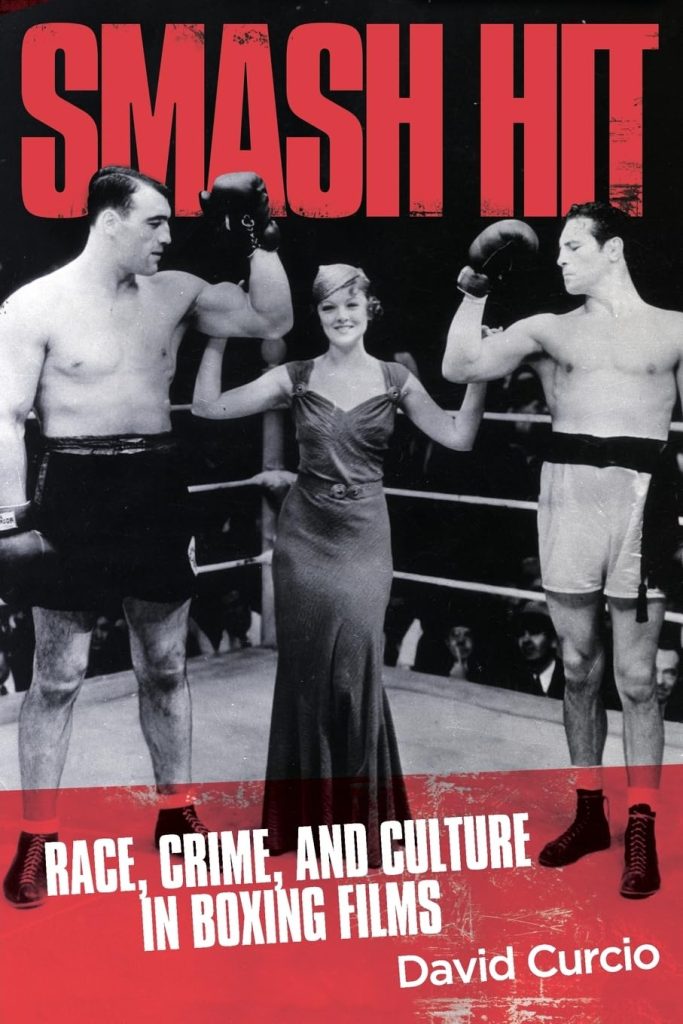 Since Edison’s celluloid film tests in the 1890s, boxing movies have held audiences captive. David Curcio, author of Smash Hit: Race, Crime, and Culture in Boxing Films, looks at 20 films from the past 90+ years of commercial cinema to examine how and why boxing films continue to sell even though boxing as a spectator sport is in decline.
Since Edison’s celluloid film tests in the 1890s, boxing movies have held audiences captive. David Curcio, author of Smash Hit: Race, Crime, and Culture in Boxing Films, looks at 20 films from the past 90+ years of commercial cinema to examine how and why boxing films continue to sell even though boxing as a spectator sport is in decline.
His scrutiny of ethics and ethnic tensions in the high-stakes worlds of entertainment, politics, and professional sports, play out against the dramatic backdrop of Golden Age Hollywood and beyond to determine why everyone loves “a good fight.”
David Curcio is an artist and writer living in Salem, MA. His numerous art, film, and book reviews have been featured on websites and magazines including Bookslut, The Boston Art Review, and Turner Movie Classics’ Noir City. His essay, “Women and Children First! Second-Wave Feminism in the Work of John Wyndam” is included in the coffee table book, Dangerous Visions and New Worlds: Radical Science Fiction, 1950–1985.
Smash Hit: Race, Crime, and Culture in Boxing Films is his first book.